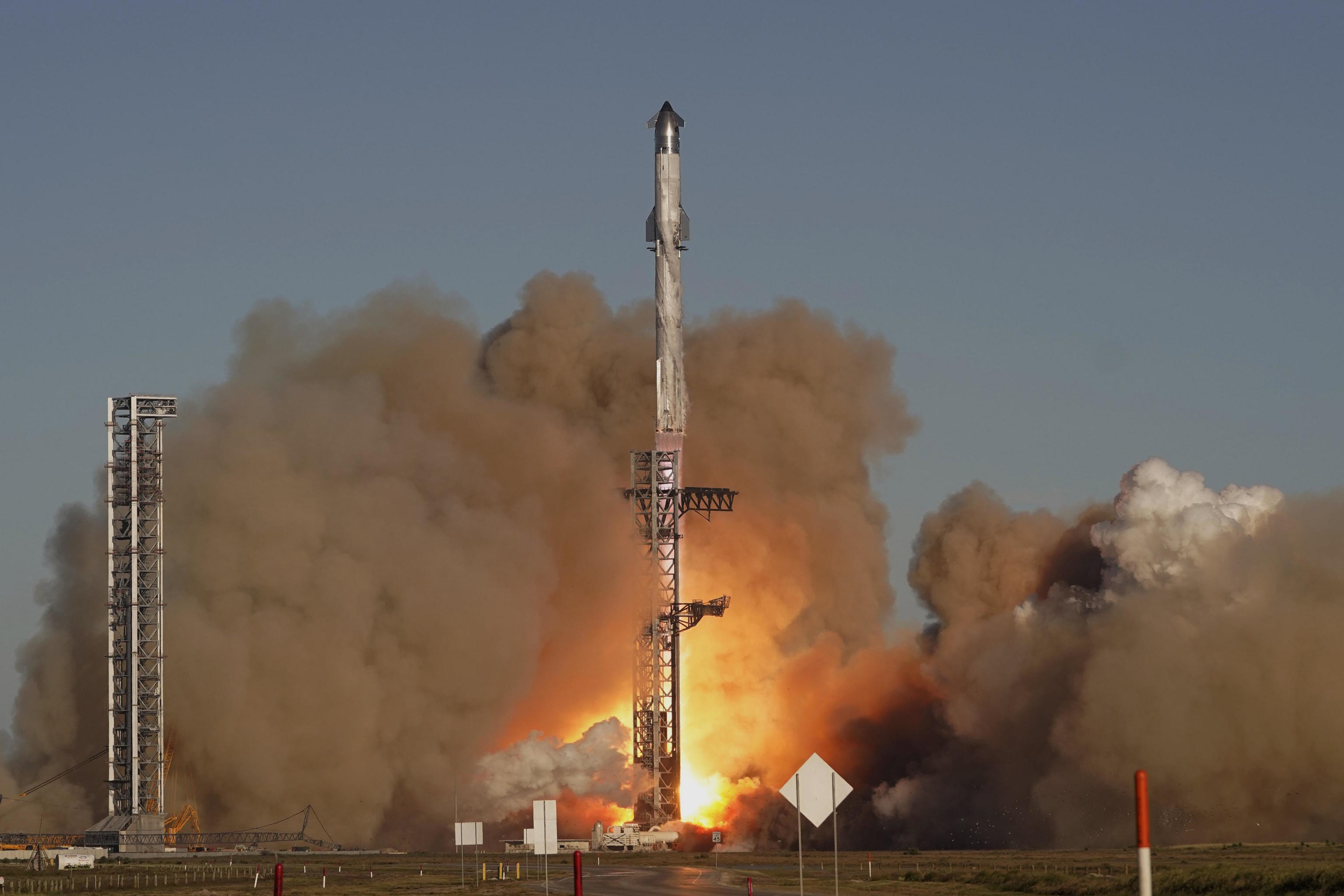It was a coincidence that the aerospace companies of the two richest men on the planet tested their respective super rockets on the same day. While Thursday began with the successful inaugural flight of Jeff Bezos' New Glenn from Cape Canaveral, Florida, it ended with the seventh test of Elon Musk's Starship from Texas. A test that turned out to be a setback for Musk as they lost contact with the spacecraft.
The launch of the Starship spacecraft, consisting of a rocket called Super Heavy and a spacecraft also named Starship, began at 23:38 Spanish peninsular time. Shortly after, the U.S. company repeated the spectacular recovery of the rocket's first stage (the booster). A milestone achieved for the first time during the fifth test flight on October 13, but not during the sixth test. However, minutes later, communication with the spacecraft was lost, as reported by the company during the live broadcast. SpaceX's team is investigating the causes of the failure.
In addition to attempting to capture the rocket's first stage (booster) again, it was also supposed to be the first time SpaceX attempted to deploy a payload, specifically 10 simulators of its Starlink satellites, with the same weight and size as those in its constellation. Another goal for Thursday was to reignite a Raptor engine while in space. Neither of these two objectives could be achieved.
According to SpaceX, the spacecraft's engines began to shut down until, at eight and a half minutes after liftoff, contact with the spacecraft was lost, which experienced an "unscheduled rapid disassembly." In other words: it exploded. The spacecraft was supposed to fly over the Gulf of Mexico from Texas in a circuit around the world similar to previous test flights but with an upgraded spacecraft. SpaceX had equipped it with 10 fictional satellites to practice their release.
"It was fantastic to see a booster land, but we are obviously disappointed about the spacecraft," said SpaceX spokesperson Dan Huot, adding that it would take time to analyze the data and find out what happened.
Throughout this year, SpaceX plans to conduct another 24 test flights of the Starship, which is a key component for the Artemis program with which NASA will return to the Moon.
